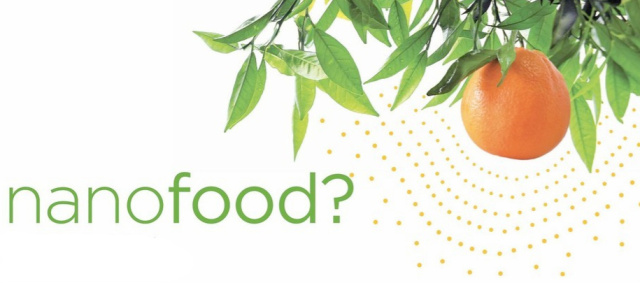Food is “nanofood” when prepared using nanoparticles and nanotechnology techniques or tools during cultivation, production, processing, or packaging of the food. It does not mean that food is modified atomically or either it is produced by nanomachines. It has been reviewed that manipulating food at this scale could help to develop foods which are lower in fat content but still taste great, or provide an opportunity to manufacturers to pack more nutrients into otherwise vitamin-free foods. This technology should not necessarily be frightful, as the human body is already used to dealing with nanoscale food as the food we eat is broken by our guts to nano sized chunks so that body can absorb nutrients in chunks.
In a country where thousands of people starve each day, increasing the production alone can help us to solve this problem to a greta extent. For the past few years, the food industry has been investing millions of dollars in nanotechnology research and development which also includes some world’s largest food manufacturers like Nestle, Unilever etc.
Nanofoods basically fall into four categories.
- First, and the foremost is that there is a direct involvement of nanotechnology in a food that we eat.
- Second, is the use nanotechnology in supplements.
- And the last two categories are comprised of things that use nanotechnology not directly in food we consume but involved in food packaging and cookware.
The potential benefits of Nanofoods that is the foods produced using nanotechnology are astonishing. Advocates of the technology have promised
- Improved food processing: This is done by using nanocapsules which improve the bioavailability of neutraceuticals in standard ingredients such as cooking oil.
- Improved packaging and safety- Nanotechnology is also poised to create better food packaging. It could reduce the amount of plastic used that is by making containers smarter by building in sensors in them that tell us whether the food inside is still fresh or has gone bad. Nano-packaging with ‘self-cleaning’ abilities will be widely available soon as the technology isn’t very different from that in the ‘anti-bacterial’ food containers on sale now. Precisely- engineered nano-scale filters allow you to remove all bacteria from milk or water without boiling
- Enhanced flavor and nutrition: done using nanocapsulated flavour enhancers
- ‘Functional foods’ where everyday foods carry medicines and supplements,
- Increased production: This is usually done by targeting growth hormones using nanotechnology to plants. And also using nanosensors to detect animal and plant pathogens. Adding nanoparticles of titanium dioxide to fertilisers could help to break down unwanted bacteria, while other nanoparticles have also been used to slowly release chemical compounds that regulate plant growth
- Cost-effectiveness
Scientists have tried to engineer apples, pears, peppers, cucumbers and other fruit and vegetables by coating them with a thin, wax-like nanocoating to extend shelf-life. The edible nanomaterial skin will also protect the color and flavor of the fruit longer.
One example where food industry has unwittingly been using nanotechnology for years is mayonnaise which is an emulsion of tiny particles, where oil and water are forced to mix together without separating. It stays thick and creamy because there are so many fat droplets that they divide the water into pockets. One way to reduce the fat content below 40% is to add more water, plus some starch to make sure the mayonnaise does not become too runny. But researchers are now developing techniques that allow these tiny droplets to be precisely tailored on the nanoscale, to give them specific tastes or textures. The techniques used to replace the insides of the fat droplets with water, creating an emulsion that has the same texture, but less fat than the real thing.
Another example is developing of nanometre-sized grains of salt, roughly a thousand times smaller than normal table salt. Carving up a grain of salt into these smaller particles increases its surface area a million-fold, which means that your food needs far less salt to give your taste buds the same savoury kick. That could be a boon for those who, worried about high blood pressure, are trying to reduce their salt intake.
Some currently available
- Samsung has fridges on the market in Asia and America that use nano-silver to kill bacteria.
- Nano-filters screens used nowadays in brewing and diary industry are so small they can filter out micro-organisms and even
- Nano-ceramic particles wich help in clustering of dirt molecules are used in supermarkets for stocking cooking oil so that it can be kept fresh and soluble forever.
- Nano-engineered molecules, which lock onto contaminants, will simplify the process of cleaning drinking water proving itself to be potentially hugely important for the developing world.
- Lactose intolerance, which is the inability to digest lactose can now be eradicated by filtering lactose from milk, and replacing with another sugar thereby making all milk suitable for the lactose-intolerant.
- Vitamin C-enriched cooking oil and omega-3 fish oil-carrying juices are already available.
Nanofoods in process………
- A chewing gum which can be used for teeth cleaning
- Cutlery which could be Self-cleaned. This could be made possible by the engineering, at atomic level of hydrophobic surfaces that allow dirt to break down and drop off
- Drinks which could be programmed to make them more nutritious and efficacious.
- Nano-coatings on some foods so as to make life span of them even longer.
- Researchers are trying to make a type of packaging that absorbs oxygen, making food last longer.
- Nano-filters are in development will would allow us to choose the amount of caffeine we want to remove from our coffee.
- Nano-scale sensors are also in process that will monitor toxins and bacteria at all stages of food processing
- Reductions in fats and salts in processed foods.



Leave a Reply